Pepper Siberian Prince: description and cultivation of varieties
In regions with a cold climate, crops with resistance to temperature extremes and unpretentious cultivation are appreciated. Such a culture is a variety of pepper Siberian prince, about it in detail below in the article.
Description and characteristic
The Siberian prince variety was bred by Moscow breeders, employees of the Federal Scientific Center for Vegetable Production. It is included in the state register of breeding achievements in 2006, and is recommended for cultivation under film shelter and on open ground in the West Siberian region.
Bushes with strong stems reach up to a meter in height. They require garters for support and formation. The leaves are triangular in shape with pronounced veins, light green. The variety is medium early, ripens in 106–114 days after planting. Long-term fruiting from a site in m² is collected up to 4.2 kg.

Advantages and disadvantages
- The main advantages of the variety:
- universality of application;
- early ripening;
- fruiting duration;
- high productivity;
- meatiness and juiciness;
- aroma and taste;
- high content of ascorbic acid;
- resistance to temperature extremes.
- Disadvantages:
- exactingness to humidity;
- Needs a garter
- without the formation of tops, it grows very much.
Planting and growing peppers
Pepper can be grown in a greenhouse or planted in open ground under temporary film shelter.
Optimal conditions
The microclimate for seed germination before sowing and for sprouted seedlings are different. Germination of seeds is carried out in a wet paper or cotton towel, at a temperature of + 28 ... + 30 ° C.
The container with seeds is covered with a film, periodically opening to moisten a napkin. Seeds should be kept in a bright place and the day should last 14–16 hours.

The first 5–7 days before seedlings appear, they are kept at a temperature of + 22 ... + 25 ° С under the film, with a gradual decrease to + 15 ... + 18 ° С for hatching sprouts. Humidity for young plants is recommended in the range of 65–70%. Daylight hours with lamps extend up to 12 hours.
Dates and technology of planting seeds for seedlings
Before sowing the seeds you need to sort out and remove the dummy. Manipulation can be combined with disinfection. In a weak pink solution of potassium permanganate, place the material for 20 minutes, remove the dummy that pops up to the surface. Promising seeds to send for germination. The process begins in mid-February in order to begin sowing in the last days of the month.
Swollen seeds are sown in a box for seedlings or peat containers, having prepared in advance the soil from peat and humus in equal proportions. The soil must be calcined in the oven at 100 ° C or shed with potassium permanganate. The seeds are buried by 1.5 cm, the same distance is left between them. Important! When ventilating the room, pots with seedlings must be protected from drafts.
Seedling Care
The first watering is carried out 3-5 days after germination, with warm water under the root. Moisturize the soil once a week. When picking, which is carried out in the phase of 2 leaves, the roots are buried by 5 mm. After watering, the surface is gently loosened, giving the roots access to oxygen.

Top dressing:
- the first - 2 weeks after the dive: urea (5 g) and superphosphate (30 g) per 10 liters of water;
- the second - a week before transplanting to the garden: potassium sulfate (10 g) and superphosphate (50 g) per 10 liters of water.
7-10 days before the intended planting, plants must be hardened by taking them to the veranda or balcony. Hardening begins with an hour, increasing the time to a day.
Technology planting seedlings in a permanent place
In open ground, seedlings are planted in early June. At this time, there is no threat of return frosts and the soil is usually warmed up to + 15 ... + 17 ° С.
Depending on the composition of the soil, it must be prepared:
- clay soil - per m² put on a bucket of humus, peat and river sand;
- loam - on a bucket of humus and peat;
- sandy soil - 2 buckets of peat and humus, a bucket of sawdust.
To grow a healthy culture, planted after acceptable predecessors:
- pumpkin;
- greenery;
- roots;
- legumes.
Important! You can not plant pepper after solanaceous plants: they are susceptible to one disease.
Landing technology:
- Wells dig at a distance of about 50 cm from each other, 60–70 cm are left between rows.
- Before planting, seedlings are sprayed with Strela solution (50 g / 10 l) to protect against pests in the soil.
- A bush is placed on a hill of land, so that the root neck is not sprinkled with soil.
- The hole is shed with warm water.
- The pit is covered with soil, having previously installed a peg for further garter.
- Considering the night temperature, peppers are covered with a film stretched on wire arcs until rooting.

Pepper Care After Planting
Rooting seedlings take 7-10 days, after which the film is removed. Plants carry out a standard set of care procedures.
Watering and feeding
The first full watering is carried out after removing the film. Until then, the soil around the plants is sprayed. Watering is carried out under the root of 0.5 l under the bush, standing warm + 24 ... + 26 ° C water. With regular precipitation, watered once a week, in the heat - 2 times a week.
Also learn how to properly water pepper in a greenhouse.
After watering, weed and loosen the area to a depth of 8 cm. Then, the trunk circle is covered with mulch: this will save the root system from overheating and inhibit the growth of weeds. Seedlings begin to feed 2 weeks after planting. Given the enrichment of the soil before planting, three fertilizer procedures are sufficient for the season.
Feeding scheme:
- The first is that the mullein infusion is diluted with water in a ratio of 1: 5, then it is insisted and added to the water, doubling the volume, watered under the root of 0.5 l under the bush.
- The second top dressing is carried out during flowering. You can use the same infusion of mullein, adding 50 g of wood ash.
- The last fertilizer dispenses with nitrogen. Plants are fertilized with an aqueous solution of superphosphate and potassium salt, per 10 l of 30 g of substances.

Pepper formation
The tall Siberian prince needs formative pruning. Usually, the tops are pinched to such bushes to make them branch. At the same time, no more than two stems are left, cutting off weak shoots.
When the fruits are tied to the main stems, pinch the skeletal shoots. The procedure will direct all the forces of the plant to the formation of large and juicy fruits. The lower leaves of the bushes must be removed to avoid high humidity, attracting pests and fungal infections.
Read about the features of growing other medium early varieties of pepper:
Pest and Disease Control
Seeds processed before sowing will give future plants immunity against disease. But in the open ground, the likelihood of being affected by diseases and pests is quite high, especially in the rainy season.
The main problems of pepper and methods of solution:
- Tobacco mosaic - foliage stained with uneven color and shape. There is no treatment, the affected bushes remove and disinfect the soil with 1% solution of copper sulfate. Rot - a gray coating on the fruit. The affected peppers are torn off, the bushes are treated with Rovral fungicide 10 g / 10 l of water, spraying.
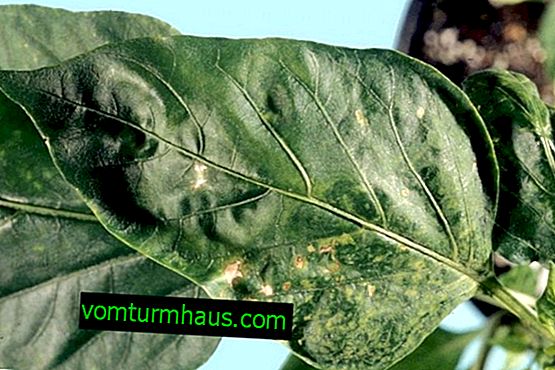
- The black leg - the stem at the surface of the earth turns black. Having found the affected bush, it is removed and disposed of, the soil in the area is treated with 1% solution of copper sulfate.
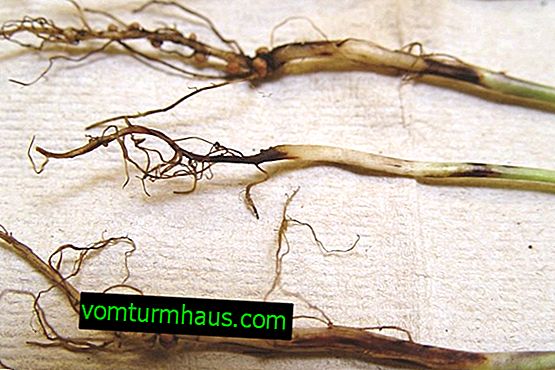
- Aphids - apply spraying with infusions of garlic, wormwood or tansy. With a large accumulation of insects, the drug "Fosbetsid" 5 ml / 5 l of water is effective.
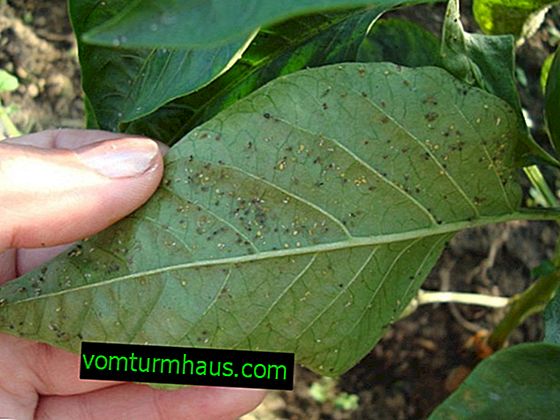
- Spider mite - apply spraying with the preparation "Akarin" 2 ml / 1 liter of water.
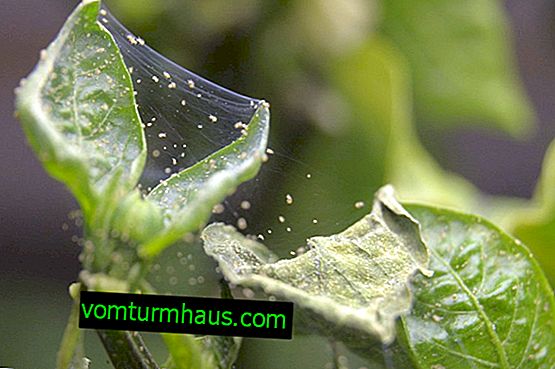
- Slugs - slugs are removed manually, for prophylaxis, hot pepper powder, nutshells are scattered on the site.
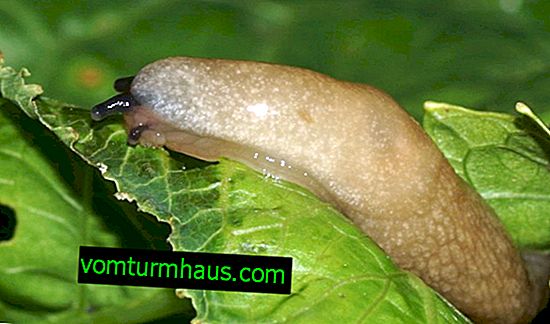
Harvest dates
The fruiting period of pepper occurs in August. For long-term storage, the pepper is collected together with the peduncle, cutting off with secateurs, in a state of technical maturity. The fetus can ripen and be stored in this form for up to 2 months. The storage room should be dry and cool, but below + 2 ° C.
It is better to store completely ripe fruits on a shelf for vegetables in the refrigerator. The Siberian prince is a thin-walled variety, therefore it is not stored for a long time. Did you know? Sweet pepper, like dark chocolate, causes the body to produce the “hormone of happiness” endorphin. Thanks to its resistance to temperature extremes, the Siberian Prince variety is recommended for regions with late summers and a cool climate. Proper care of seedlings and seedlings on the site will allow you to collect a quality crop.








